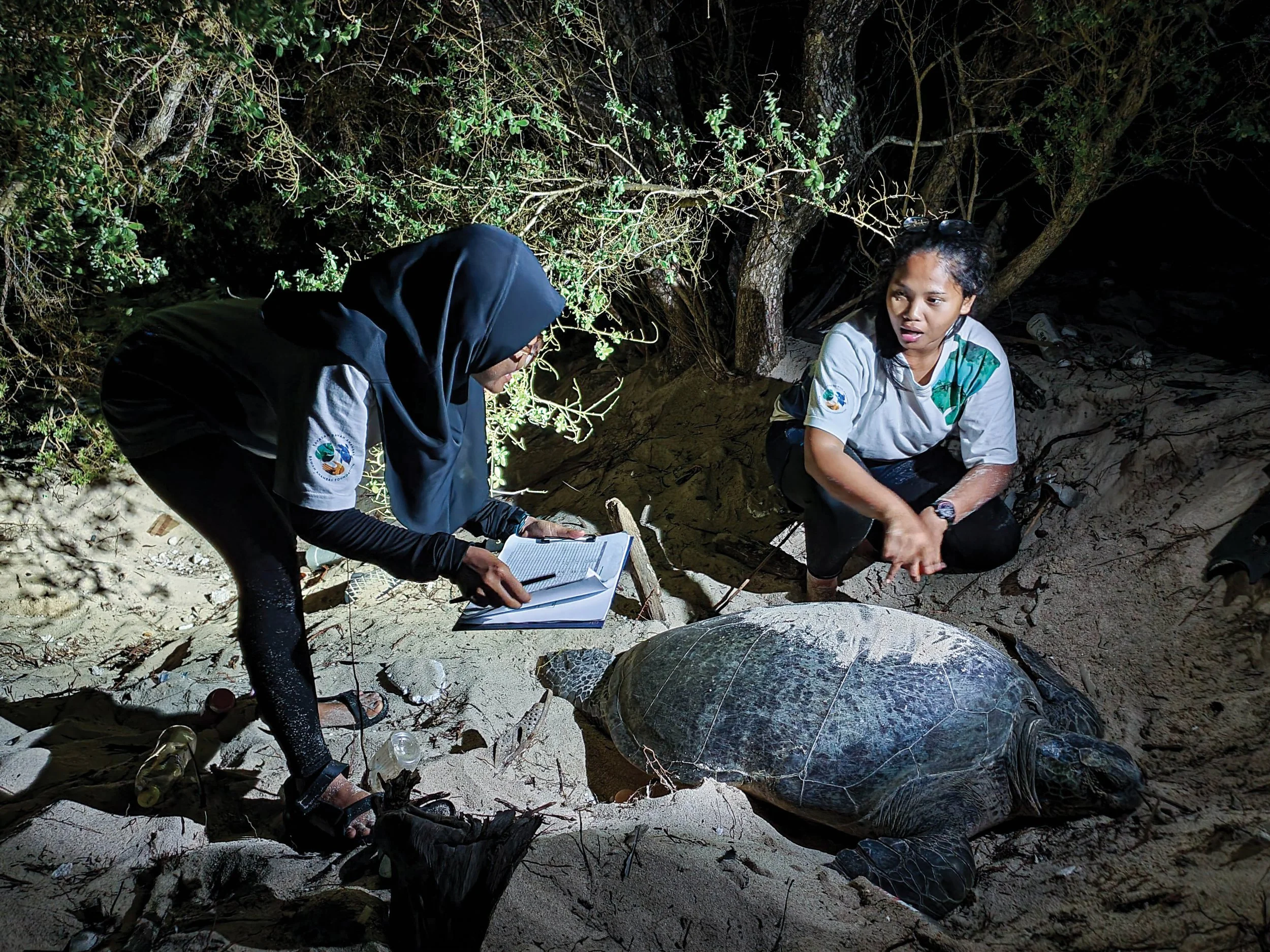Bedawang Nala and the Bali Turtle Market
By Ketut Sarjana Putra
Researchers from the Anambas Foundation monitor a nesting green turtle in Indonesia’s Anambas Islands. With more than 18,000 islands, Indonesia is home to innumerable sea turtle nesting sites, many of which are unmonitored. © Anambas Foundation
The Indonesian island of Bali has been a thriving tourist destination for half a century or more, attracting international visitors to enjoy its beautiful beaches and forests and to appreciate its rich cultural diversity. Over time Bali has increasingly become a hopping-off point for scuba divers, surfers, and ecotourists who are interested in experiencing Indonesia’s vast wealth of species and ecosystems. The fact that the island was also the epicenter of green turtle harvest—and the site of what was arguably the world’s largest unconcealed green turtle market from the 1960s to the early 2000s—was a sad and stark juxtaposition. The Bali green turtle market had long been justified as both a key part of Bali’s cultural and religious traditions and an important economic driver among the region’s fishers.
Records show that at least 35,000 green turtles were landed and sold there annually, originating from many of Southeast Asia’s largest green turtle rookeries and key feeding areas in the Arafura Sea; the Raja Ampat Archipelago of West Papua; and the islands of Borneo, Java, Nusa Tenggara, and Sulawesi. In addition to green turtles, mostly consumed for their meat and oil, a large number of hawksbills also entered the Bali market and from there became part of the larger international tortoiseshell trade. The massive harvest of green turtles destined for the Bali market drove measurable downturns in nesting turtle populations throughout Indonesia.
Bold efforts spearheaded by the Indonesian and Bali governments over a period of seven years (1995–2001) introduced new policies and regulations that effectively closed the Bali turtle market in the early 2000s. Those changes were accompanied by intensive and strategic education and awareness efforts led by conservation nongovernmental organizations and supported by public media, which emphasized the high volume of trade and the significant decline of green turtle nesting populations.
One of the keys to the success of the legal shutdown of the market, and of the black-market trade in turtles, came from the effective inclusion of Balinese Hindu communities and religious leaders, who came to embrace sea turtle conservation as important to the health of the environment and, ultimately, to the sociocultural and economic well-being of the Bali community. Once aware, the Hindu community fully stopped the trade in turtles and to this day continues to conduct community-based turtle conservation on nesting beaches that aims to reverse decades of turtle losses and “pay back the karma.” One of the legendary turtle traders from the turtle market’s heyday confessed, “I should have learned more and believed in the bedawang nala.” The bedawang nala is the sea turtle statue that sits at the base of every Hindu temple to support its tie to Earth. It is a holy creature that must be fully preserved and respected, not just as a mythical deity, but as a living creature.
Author Affiliation
Ketut Sarjana Putra, Konservasi Indonesia, Bali, Indonesia
This article originally appeared in SWOT Report, vol. 19 (2024). Download this article as a PDF.

